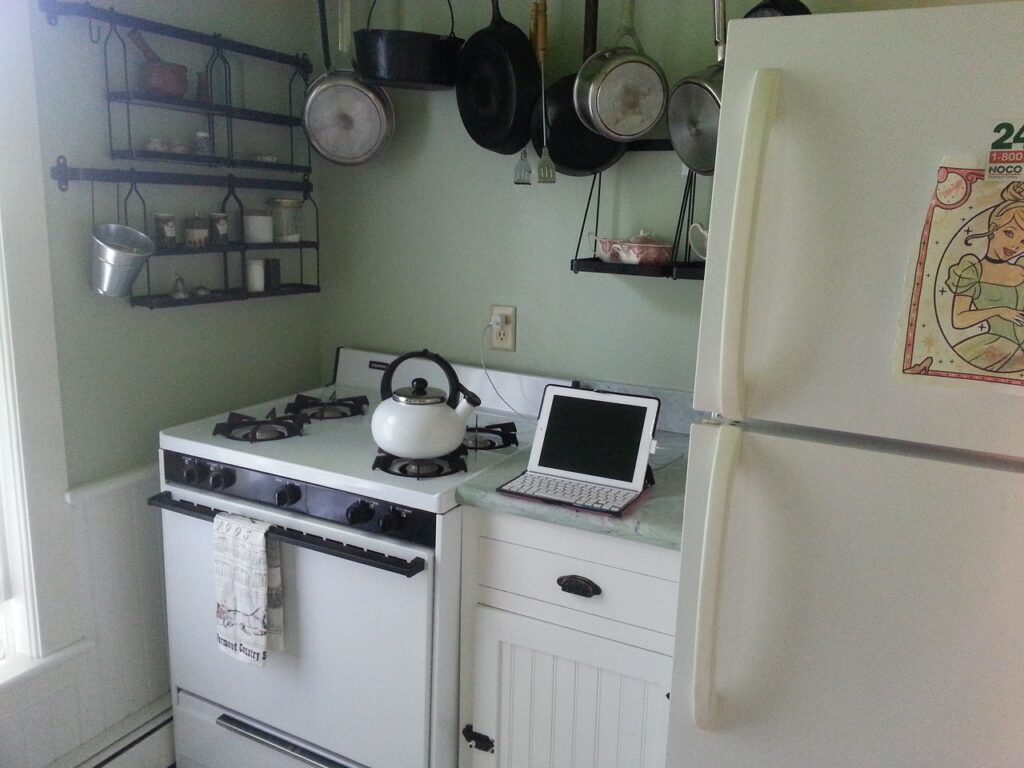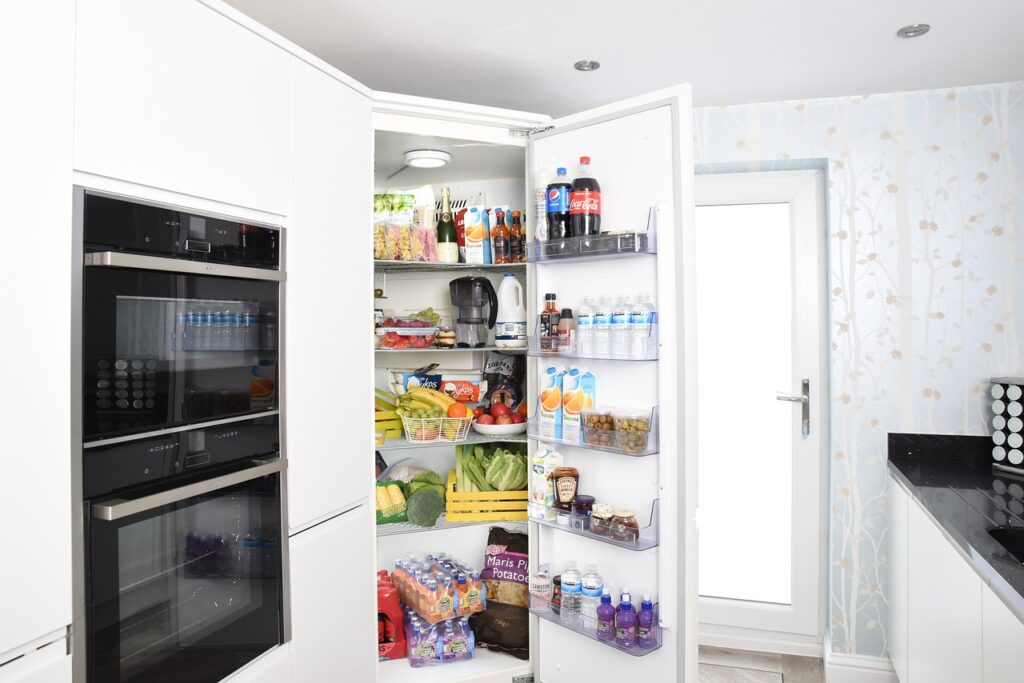Last updated on October 17th, 2023 at 10:18 pm
Your refrigerator is an essential household appliance that keeps your food fresh and your drinks chilled. Whether moving to a new home or renovating your kitchen, you may wonder if it’s safe to lay your refrigerator on its side.
While this idea might seem tempting for convenience, it’s crucial to understand the potential risks and benefits involved in doing so.
In this article, we will explore the pros and cons of laying your refrigerator on its side to help you make an informed decision.
The Pros of Laying Your Refrigerator on Its Side
1. Easier Transportation
One of the primary reasons people consider laying their refrigerator on its side is for transportation purposes.
When moving or relocating, applying the fridge on its side can make it more manageable to transport, primarily through narrow doorways or tight spaces.
2. Space Optimization
If you have limited space in your home and need to temporarily store the refrigerator, laying it on its side can free up valuable floor space. This can be helpful during kitchen renovations or rearranging your living area.
3. Minimal Load on Compressor
Proponents of laying fridges on their side argue that this position can minimize stress on the compressor. They believe keeping the compressor horizontal prevents it from working against gravity, reducing wear and tear.
Effects of Laying a Refrigerator on its Side

When a refrigerator is laid on its side, a series of processes that keep it running smoothly can be disrupted, leading to various potential consequences that may compromise its performance and durability.
Let’s explore the effects of placing a refrigerator horizontally and how it can impact its internal components.
1. Oil Displacement and Cooling Coil Blockage
The refrigerator’s compressor contains lubricating oil crucial to its proper functioning. When the fridge is laid on its side, this oil can migrate away from its intended location and accumulate in the cooling coils.
The consistency of the oil, being thick and dense, poses a risk of clogging up the coils.
This obstruction can impede refrigerant gas flow through the coils, resulting in inadequate cooling capacity. The refrigerator may struggle to maintain the desired temperature, leading to spoiled food and reduced efficiency.
2. Potential Overheating and Mechanical Stress
The compressor relies on a specific amount of lubricating oil to operate efficiently and prevent excessive friction.
When the fridge is laid on its side, there is a chance that the compressor might not receive the necessary lubrication, potentially causing overheating.
Overheating can accelerate wear and tear on vital components, leading to premature breakdown and reduced lifespan. The lack of proper lubrication can also increase mechanical stress within the compressor, which may result in malfunctioning parts and increased energy consumption.
3. Misalignment and Dislodgment of Internal Components
The internal structure of a refrigerator is carefully designed to function optimally when placed upright.
Laying the refrigerator on its side can cause the internal components, such as the compressor and various mechanisms, to shift or become dislodged due to the force of gravity.
For instance, brackets that secure the compressor in an upright position may not be able to bear the weight of the compressor when it’s horizontal.
Consequently, the compressor and its internal parts may become misaligned or dislodged, potentially leading to disruptive noises, reduced cooling efficiency, and even mechanical failure.
4. Posture Restoration and Cooling System Stabilization:
If you do decide to lay your refrigerator on its side for transportation or storage purposes,
it’s crucial to follow proper procedures for restoring its upright posture. After placing the refrigerator back in an upright position,
it’s recommended to allow it to stand undisturbed for a significant period before powering it on.
The waiting period allows the displaced oil to return to its designated location and the internal components to settle properly. Ignoring this essential step may lead to immediate or gradual cooling issues and mechanical complications.
Precautions to Take

If you decide to lay your refrigerator on its side despite the potential risks, it’s essential to follow these precautions to minimize the chances of damage:
- Turn Off and Unplug: Before moving the refrigerator, ensure it is turned off and unplugged. This will prevent any electrical accidents and protect the fridge’s internal components.
- Let It Stand Upright: Once you’ve transported the refrigerator to its new location, allow it to stand upright for at least 24 hours before turning it on. This waiting period will help any disturbed refrigerant settle back to its proper place, reducing the risk of leaks and other issues.
- Secure the Doors: During transportation, secure the refrigerator doors with tape or rope to prevent them from swinging open and causing damage.
- Seek Professional Help: If you’re unsure about handling the refrigerator on your own, it’s best to seek assistance from professional movers or technicians who have experience in transporting appliances safely.
Key Takeaway
Laying your refrigerator on its side can be a tempting solution for easier transportation and space optimization.
However, the risks involved, such as refrigerant leakage and compressor damage, should not be underestimated. If you decide to proceed, take the necessary precautions and allow the refrigerator ample time to stabilize before use.
When in doubt, consult the manufacturer’s guidelines or seek advice from a professional technician. Ultimately, the decision rests on your circumstances and willingness to take on the potential risks for the sake of convenience.
